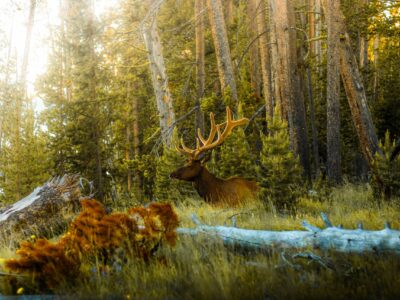It’s been a summer of extremes—oppressive heat, deadly wildfires, record rainfall and floods, and more—all of which has brought about immense suffering, damage, and loss. Who can bear it all?
In the midst of such overwhelming natural disasters, it’s easy to feel both anxious and helpless. Our feet get stuck in the mud of rising floodwaters. Our hearts are weighed down by the grief and sorrow of our brothers and sisters whose homes and livelihoods have been swept away or burnt to the ground. These crises are real, and they require lament.
“Grieve, mourn and wail,” James urges us. “Change your laughter to mourning and your joy to gloom” (James 4:9 NIV).
As much as it is tempting to stay in that space of loss and lament, Scripture also shows us a way out of our grief and mourning. The Bible reminds us that God is not a God of looking back. God is a God of new beginnings. God is a God of rebirth. God is a God of restoration.
The prophet Isaiah writes:
“…Forget about what’s happened;
don’t keep going over old history.
Be alert, be present. I’m about to do something brand-new.
It’s bursting out! Don’t you see it?
There it is! I’m making a road through the desert,
rivers in the badlands.
Wild animals will say ‘Thank you!’
—the coyotes and the buzzards—
Because I provided water in the desert,
rivers through the sunbaked earth…”
Isaiah 43:16-21 MSG
Even the natural world showcases God’s commitment to restoration. We can lift our eyes and see the new thing God is doing on the horizon. We can see evidence of how God uses suffering as a mode of resurrection, birthing beauty, growth, and life from the ashes.
When communities around the globe find themselves crushed by natural disasters, Scripture exhorts us to wake up and take action on their behalf. With human-impacted climate change, there are things we can do to help reverse the acceleration of our planet’s warming and its grave consequences.
In the midst of our immediate suffering, these reminders of what comes next—the new thing God is doing—instill hope and inspiration to keep walking, keep working, and keep striving for the kingdom of heaven here on Earth.
God’s built-in restoration system on Earth shows up in all kinds of wild ways:
Hope from the Ashes: Wildfires
Trunks of the trees of a burnt forest on a mountain in Ripplebrook, OR. Image: Stevie Mix
Despite our horror and helplessness in the face of out-of-control wildfires, fires are a natural phenomenon. Ecological benefits spring up out of the charred earth, and what looks like death and desolation can—and will—grow back, flourish, and rise like a phoenix from the ashes.
Regions where fires are common actually rely on fire to remain healthy and diverse.
Fire releases nutrients from both decaying plant and animal matter faster than if the material had been left to decompose over time, increasing soil fertility.
There are also plants that require fire in order to propagate the next generation, including many pine tree species, and plants like buckbrush and manzanita.
Even some species of animals depend upon wildfires for their survival, including the black-backed woodpecker, which relies upon dead trees left standing after severe fires for their nesting sites and for foraging insects that are hard at work eating and decomposing burned trees.
The burned floor of a forest opens to brighter light, awakening dormant wildflowers and grasses that serve as habitat for smaller mammals, which in turn feed predatory species.
Just like these many plants and animals that have adapted to fire in their ecosystem, humans too need to make space for this natural occurrence, protecting human lives and property at the same time.
Desert Rain and Superblooms
This August, the rain gauge at Furnace Creek in Death Valley, California, measured 2.2 inches of rain in a single day. The park’s average rainfall is 2.15 inches. The park keeps breaking records for rain and has observed several rare rain events in the last few years.
These rain events sometimes spur what is known in the desert as a “super-bloom.”
Conditions for a super-bloom have to be just right to happen, including perfectly timed rain that washes the protective coating off wildflower seeds so they can sprout, followed by occasional, evenly spaced rain in the coming seasons. The soil has to start to warm and delicate sprouts need to resist the harsh desert windstorms that are common in the spring.
But usually once a decade, all of these conditions are met, and a sea of gold, purple, pink, and white flowers drape themselves over the desert floor. The last super-bloom was in 2016. Could this summer’s rain redeem the floods with this dramatic show next spring and summer?
The Aftereffects of Mudslides
Aftermath of a mudstream that knocked down and uprooted trees. Image: Alexey Fedenkov
Regions prone to landslides are also known for their fertile land and water sources, which of course make them attractive places to settle. But severe storms combined with the “right” conditions trigger these natural events.
There’s no doubt that mudslides damage manmade environments and wreak havoc on people’s lives. They can also be positively transformative.
Landslides create new habitats, which in turn invite greater biodiversity, turning the turned-over land into a brand-new micro-environment.
Landslides can provide raw materials like firewood, medicinal plants, game and berries, and minerals, which can be exposed by landslides.
Floods and Floodplains
An egret glides across the wetlands at Assateague Island National Shorlines in Maryland. Image: Sara Cottle
Even floods can be beneficial.
Floods recharge water sources, enrich the soil for agriculture, trigger the spawning and migration of certain species of fish and other creatures as part of their natural life cycle, and rejuvenate river ecosystems.
One of the challenges of modern societies is that we’ve made lots of attempts to contain and control natural patterns of floods and floodplains, which haven’t worked and often fail. We need to work with the natural landscape and its age-old rhythm instead of fighting against it to protect human life and property.
According to American Rivers, “Restoring floodplains to give rivers more room to accommodate large floods is the best way to keep communities safe. Giving rivers more room provides a number of other benefits including clean water; open space for agriculture, recreation and trails, and habitat for fish and wildlife.”
American Rivers works with local, regional, and state agencies to advocate for, protect, and restore rivers, floodplains, and wetlands, which in turn allows all life to flourish.
God Is at Work Restoring All of Creation
In the immediate aftermath of tragedy and natural disaster, it might not feel like God is at work. But there, in the midst of suffering and loss, God is planting the seeds of hope and flourishing that will grow out of life’s wreckage.
“Weeping may stay for the night, but rejoicing comes in the morning,” writes the psalmist (Psalm 30:5 NIV).
Goodness, healing, and restoration will come. That is our hope, and that is the horizon on which we set our vision. May it be so.





 Copyright
2024
Root and Vine
Copyright
2024
Root and Vine